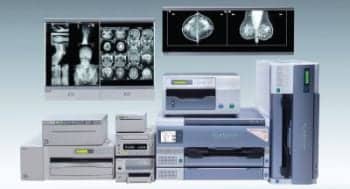
During a recent power blackout that swept across the Southwest, affecting nearly 5 million residents in California, Arizona, and Mexico, StatRad, a teleradiology facility in San Diego, stayed up and running in spite of the dire conditions. In the largest power outage in the region’s history, San Diego was in the dark for more than 12 hours. Gas stations, traffic systems, banking services, and business centers were completely shut down, bringing commerce in the nation’s eighth largest city to a grinding halt. During the outage, however, StatRad switched to backup power sources to ensure there was no interruption in service. As local hospitals were able to get back online, StatRad’s interpretations were already available for attending physicians to review.
According to Joe Moock, StatRad’s CEO, “We created a system of multiple redundancies at each data center to ensure that there is never an interruption in service. To ensure availability 24/7/365, we developed a comprehensive plan for maintaining ongoing coverage in the event of a large-scale outage or natural disaster.” By building a high-tech infrastructure with a secondary data center nearly 500 miles away, StatRad is able to provide expedient, accurate, and reliable interpretations in virtually any situation. By providing nonstop support for all clients at any time, StatRad is able to make sure that care is delivered quickly during unforeseen circumstances—even when it’s an unprecedented blackout.
In Oregon, which was not affected by the blackout, it was business as usual due to StatRad’s farsighted contingency planning. Cascade Medical Imaging in central Oregon depended on StatRad’s services. Dave Magness, director of imaging at the facility, who happened to be in San Diego at the time, was worried that the blackout would prevent Cascade from continuing business. “We’re a unique facility,” said Magness. “We’re relatively small and service a far-reaching group of small facilities, one of which is over 7 hours away.
“Our communication with StatRad has been easy from the start. They read mostly CT scans,” said Magness. “When I call them, the doctor I want to reach usually picks up the phone. We are used to rapid turnaround time, usually within 30 minutes. But observing the lights-out blackout in San Diego, I didn’t know what would happen. I was very impressed with their ability to deal smoothly with the situation. They kept functioning without a break, so for our facility in Oregon, it was just another day at the office in spite of blackout conditions in San Diego.”
The StatRad backup system kicks in automatically in the event of a power outage or other natural disaster. The group uses Voice over Internet Protocol (VoIP) to reroute phone calls as needed, so continued communication is ensured. When needed, they can fall over to a secondary data center to ensure uptime. If a natural disaster (large earthquake, fire, etc) makes their facility inoperable for any reason, they can switch to a secondary data center in San Francisco—nearly 500 miles away. StatRad’s stellar performance during the recent power outage in the Southwest is testimony to the organization’s proactive planning.




